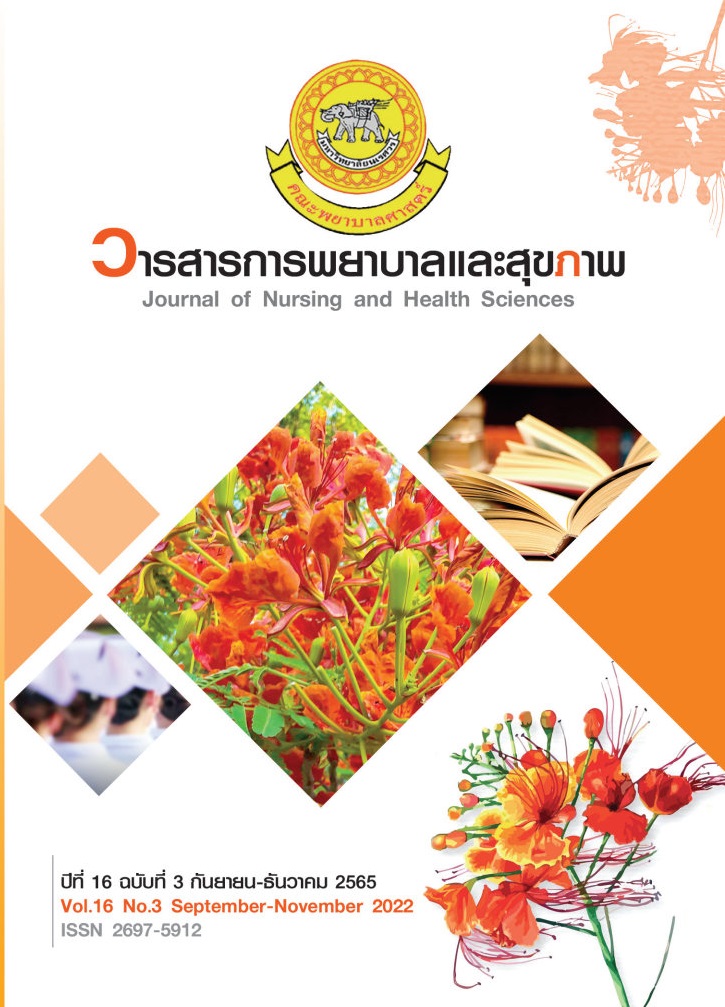ผลการจัดการเรียนการสอนด้วยหุ่นจำลอง SIM-MOM ในวิชาปฏิบัติการพยาบาลมารดาทารก และการผดุงครรภ์ 2 ของนักศึกษาพยาบาล วิทยาลัยเซนต์หลุยส์
Main Article Content
บทคัดย่อ
งานวิจัยนี้มีวัตถุประสงค์เพื่อ 1) ศึกษาผลการจัดการเรียนการสอนด้วยหุ่นจำลอง SIM-MOM ในวิชาปฏิบัติการพยาบาลมารดาทารกและการผดุงครรภ์2 และ 2) เพื่อเปรียบเทียบความมุ่งมั่น ทักษะการปฏิบัติ ความมั่นใจ ความเห็นอกเห็นใจผู้อื่น และความพึงพอใจของนักศึกษาพยาบาลกลุ่มที่เรียนผ่านหุ่นจำลอง SIM-MOM ก่อนขึ้นปฏิบัติบนหอผู้ป่วย กับนักศึกษาพยาบาลกลุ่มที่ขึ้นปฏิบัติบนหอผู้ป่วยก่อนเรียนผ่านหุ่นจำลอง SIM-MOM กลุ่มตัวอย่างคือนักศึกษาพยาบาลที่ศึกษารายวิชาการปฏิบัติการพยาบาลมารดาทารกและการผดุงครรภ์ 2 ในภาคเรียนที่ 2 ปีการศึกษา 2562 จำนวน 70 คน แบ่งเป็นกลุ่มที่เรียนผ่านหุ่นจำลอง SIM-MOM ก่อนการเรียนแบบขึ้นปฏิบัติบนหอผู้ป่วย จำนวน 35 คน และกลุ่มเรียนแบบขึ้นปฏิบัติบนหอผู้ป่วยก่อนเรียนผ่านหุ่นจำลอง SIM-MOM จำนวน 35 คน ด้วยวิธีการสุ่มอย่างง่าย เครื่องมือที่ใช้ในการวิจัยเก็บข้อมูลด้วยชุดการจัดการเรียนการสอนด้วยหุ่นจำลอง SIM-MOM แบบวัดผลการเรียนรู้ของนักศึกษาพยาบาล และแบบการสนทนากลุ่มย่อย สถิติที่ใช้ในการวิเคราะห์ข้อมูล ได้แก่ ค่าร้อยละ ค่าเฉลี่ย ค่าความเบี่ยงเบนมาตรฐาน ค่า t – test และการวิเคราะห์เนื้อหา (Content Analysis)จากการสนทนากลุ่มย่อยผลการวิจัยพบว่า กลุ่มตัวอย่างทั้งหมดมีคะแนนเฉลี่ยโดยรวมอยู่ในระดับมากที่สุด เมื่อพิจารณาเป็นรายด้านพบว่า ทุกด้านได้แก่ ความมุ่งมั่น ความมั่นใจ ความเห็นอกเห็นใจผู้อื่น ทักษะการปฏิบัติ และความพึงพอใจอยู่ในระดับมากที่สุดเช่นกัน และเมื่อเปรียบเทียบคะแนนเฉลี่ยของทั้งสองกลุ่มพบว่า ความมั่นใจและทักษะการปฏิบัติของนักศึกษาพยาบาลทั้งสองกลุ่มแตกต่างกันอย่างมีนัยสำคัญทางสถิติที่ระดับ .05 ส่วนด้านอื่นไม่แตกต่างกัน ข้อเสนอแนะจากการวิจัย คณะผู้สอนควรมีการจัดประชุมเชิงปฏิบัติการเพื่อร่วมกันพัฒนาสถานการณ์จำลองให้มีความหลากหลาย และยากง่ายเหมาะสมกับแต่ละวิชา เพื่อช่วยเพิ่มพูนความรู้และทักษะของผู้เรียนมากขึ้น รวมทั้งเลือกวิธีการสอนและจัดกิจกรรมที่เหมาะสมกับเนื้อหาวิชา สิ่งที่ต้องการเสริมสร้างหรือพัฒนา และบริบทของนักศึกษาพยาบาล นอกจากนี้ ควรนำหุ่นจำลอง SIM-MOM ไปใช้ทบทวนก่อนนักศึกษาลงฝึกปฏิบัติการทางพยาบาลในชั้นปีที่สูงขึ้น
Article Details

อนุญาตภายใต้เงื่อนไข Creative Commons Attribution-NonCommercial-NoDerivatives 4.0 International License.
เอกสารอ้างอิง
Durham, C. F., & Alden, K. R. (2008). Enhancing
Patient Safety in Nursing Education Through
Patient Simulation. In R. G. Hughes (Ed.),
Patient Safety and Quality: An EvidenceBased Handbook for Nurses. Agency for
Healthcare Research and Quality (US).
Jeffries, P. R. (2005). A framework for designing,
implementing, and evaluating simulations
used as teaching strategies in nursing.
Nursing education perspectives, 26(2), 96-103.
Khalaila, R. (2014). Simulation in nursing education:
an evaluation of students' outcomes at their
first clinical practice combined with
simulations. Nurse education today, 34(2),
-258. https://doi.org/10.1016/j.nedt.2013.
015
Khammanee, T. (2014). Science of Teaching Pedagogy
(18th ed). Bangkok: Chulalongkorn University
Press. [In Thai].
Langkarpint, P. (2016). The Use of High-Fidelity
Patient Simulation in Teaching and Learning
for Nursing Students. Journal of Nurses
Association of Thailand NorthernRegion,
(1): 8-16. [In Thai].
Mould, J., White, H., & Gallagher, R. (2011). Evaluation
of a critical care simulation series for
undergraduate nursing students.
Contemporary Nurse, 38(1-2), 180-190.
https://doi.org/10.5172/conu.2011.38.1-2.180
Panawatthanapisuit. S, Lertlum, L., &Tanasansutee.
C. (2019) Development of Simulation Scenario
Model for Simulation Based Learning.
Journal of health science, 28(special issue),
-41. [In Thai].
Panich, V. (2013). Teachers for students - creating
a flipped classroom (2nd ed.). Bangkok: SR
Printing Mass product. [In Thai].
Prensky, M. (2001). Digital natives, Digital immigrants.
On the Horizon, 9(5), 1-6.
Promphasit, P. (2016). Documentation for Learning
Management “Active Learning (AL) for HuSo
at KPRU”. Faculty of Humanities and Social
Sciences, KamphaengPhetRajabhat University.
[In Thai].
Radabut, M., Thanirat, S., & Pinyomit, S. (2019).
Perceptions and Experiences of Nursing
Students in Boromarajonani College of
Nursing Changwat Nonthaburi regarding
Active Learning. Journal of the Royal Thai
Army Nurses, 20(3), 144-153. [In Thai].
Saint Louis College, (2016). History. Retrieved from:
https://www.slc.ac.th/slcmain/about-us/
history.php. [In Thai].
Sittipakorn, S., Kochamat, A., Seubniam, S.,
Pongprathet, J., Chumpawadee, U.,
Gawgleun, W.,…Sutthayakorn, N.. (2018).
Effects of high-fidelity simulation-based
learning on self-confidence and satisfaction
among the 3rd years nursing student in faculty
of nursing Mahasarakham University.
Sarakham Journal, 14(1), 600-609. [In Thai].
Tepvorachai, U. (1999). A development of the active
learning instructional model in nursing
education at the undergraduate level. Bangkok:
Faculty of Education, Chulalongkorn
University. [In Thai].
Waxman, K. T. (2010). The development of evidencebased clinical simulation scenarios:
guidelines for nurse educators. The Journal
of nursing education, 49(1), 29-35.


